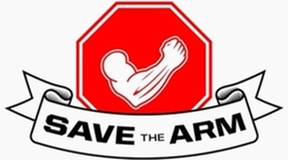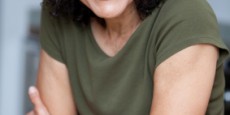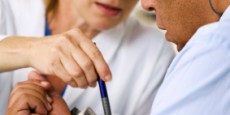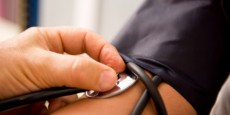Save The Arm (TM) was based on the Model for Social Entrepreneurship and Innovation, developed by the founder, John Krueger, MD
The model consists of the following parts:
1. Identification of a unique problem (or opportunity) that has a significant impact on the lives of patients and families.
2. Research potential solutions, preferably with those affected by or most likely to be affected by the problem or opportunity. (e.g. patients). This involves social anthropological work and involves interviewing, listening to patient stories, observing, cataloguing common source points and using the tenants of design and engineering to craft a common solution set to the problem (e.g. opportunity).
3. Create a brand. This has to be an enduring brand that is dynamic, clear and able to be easily recognized. By branding, the process and product must be clear and non-ambiguous and able to be identified as such. Branding allows several benefits. First, it creates an indelible and lasting mark and secondly a clear point of reference which might be important when cross comparison of products and methodologies occurs. Branding can also impart intrinsic value to a product, process or methodology.
4. Augment or create a new methodology and process pathway attached to the brand . While most products and processes work, often the degree to which they work might be contingent on contextual or design based knowledge and frameworks. Methodologies and processes should reinforce and be reinforced by the products and brand.
5. Create perpetual reinforcement with physical and intellectual property solutions. Examples include, educational series, physical safety products, etc
6. Create awareness by leveraging social media, intrinsic and extrinsic networks and connections and mobilization of volunteers toward a campaign.
7. Aggressive early trial with tests to failure. It is important that ideas get vetted early and aggressively. In general, most products and processes created through this Model will not undergo extensive testing. Therefore a high degree of confidence that the product and process will help and not hurt the current problem or opportunity must exist. Getting the products and processes into the hands of patients and end users is the key to the models success. Patients and end users ultimately determine the value of the product and process that has been created and in this model also serve as those who test out and assess the utility. Incomplete prototypes or concepts are even fine to take to a market when that market is willingly allowed to participate of their own volition and experience. By not allowing perfect to be the enemy of good, ideas can be placed into the market place and then perfected by the end users.
8. Bring to market with speed and economic agility. Specifically one of the primary goals of the Save The Arm (TM) Model for Social Entrepreneurship and Innovation M is that the entire project, including the first articles of product, the website design and layout, initial protection of intellectual property, marketing and overhead should not exceed a start-up cost of $5,000. Typically, after this phase, the next phase is to take the concept to the market place and if additional capital is needed to continue the project it is sought at that time. Additionally, a tentative deadline for each project is set of about 6 months. Though some projects come to market much faster, others take a few months longer. In general, however, the model is set up to fund projects with the capacity for rapid development and deployment.
9. The project must tell the patient’s/customers story and encourage more storytelling. Ongoing storytelling by end users and patients becomes the basis for product re-design. Criticism and feedback is considered the test bed for the project which becomes more of an iterative platform on which change occurs.
10. Wash, rinse, repeat! This model works by leveraging rapid idea scale up to a multi-modal model which contains the non-perfected elements of governance, advertising, branding, media, product, methodology and process as one common solution package. That this can be accomplished at such small scale and with rapidity ( most projects take less than 6 months form start to final presentation) is one of the reasons that it is such an attractive model. For example, many large scale innovation models employ highly formal structures and risk considerable sums of economic resources. By encouraging rapid development of a not-fully perfected product and process it is possible to fail early and fast and allow more chances. What would you rather have one chance to succeed in a $100,000 innovation or 20 chances to succeed with 20 ($5000) Model for Social Entrepreneurship and Innovation projects?
That’s the 10 point model. Now go out there and get your social entrepreneurship on!



